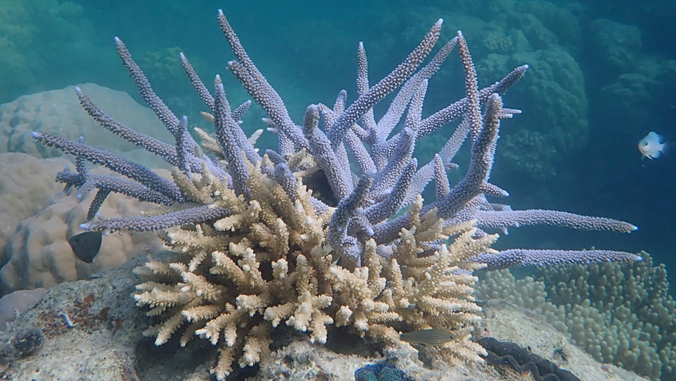
Time is running out to envision how climate change will impact biodiversity and the functioning of the biosphere. To make predictions, researchers need to rapidly accelerate understanding the planet’s diverse forms of life. A new global network of international researchers, including University of Hawaiʻi at Mānoa’s School of Ocean and Earth Science and Technology associate researcher Joshua Madin, are using the power of open-source technology and communication to document life from a trait-based perspective.
The Open Traits Network (OTN) is a major global assembly of biodiversity scientists from universities, museums, herbariums (plant equivalent of a museum) and government agencies. This group published a perspective in Nature Ecology and Evolution to catalogue species traits—features of organisms that tell us how they go about daily life—in an effort to save and predict biodiversity in the future.
“Traits offer an exciting opportunity for scientists working across different organisms to combine their knowledge,” said Rachael Gallagher of Macquarie University in Sydney, lead researcher on the study. “Although we’ve done an amazing job of naming species over the last 200 years, it’s now time to match this and document broadly how different species function and what approaches and adaptations they share.”
For example, the presence of wings is a trait that reveals the use of flight to move around a landscape. But flight is not limited to birds. Bats and even plants have wings to move between habitats. By documenting common traits among species, scientists can create a generalized picture of how life is adapting to the environment to improve their predictions of the effects of climate change and land-use conversion.
“It’s been incredible watching the proliferation of trait data across the tree of life, ranging from microbes to whales and genes to fossils. But connecting all these data efforts to look at the bigger picture has been difficult. The Open Traits Network makes connections much easier, and I encourage people to sign up to the initiative,” said Madin, who is based at SOEST’s Hawaiʻi Institute of Marine Biology.
The OTN has a set of standards, methods and offers a code of conduct in order to rapidly integrate the world’s trait data. The OTN proposes that the global network of biologists who measure traits adhere to open science principles, which make scientific research and its dissemination accessible to all people.
For more on the story see SOEST’s website.
—By Marcie Grabowski

